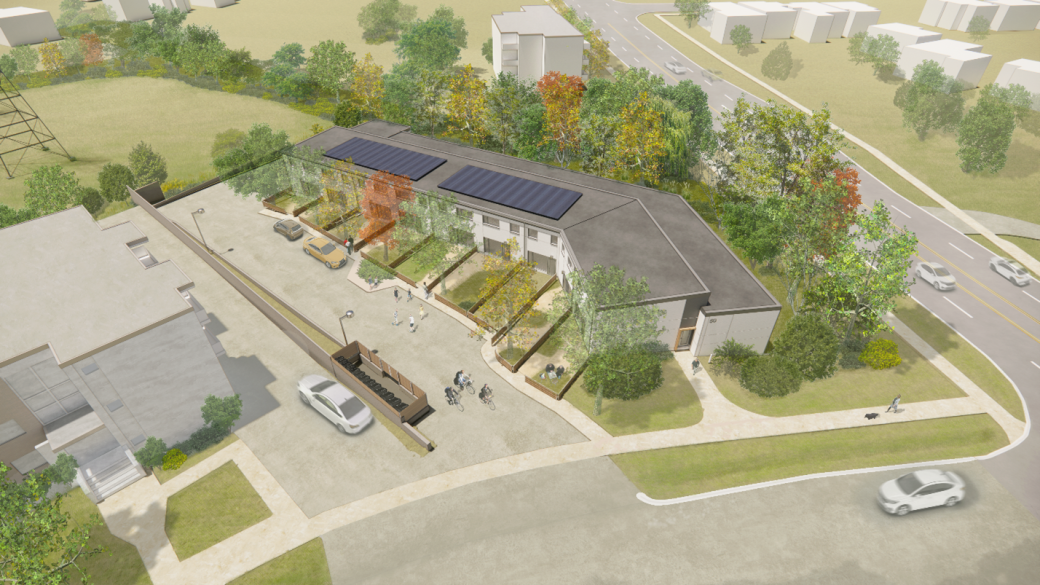The latest in energy saving projects at TCHC
Renovations at 50 Torbolton Drive will make the 17 three-bedroom units net zero and meet Passive House standards.

A rendering of the finished project at 50 Torbolton Drive
Nobody knew what was in store for 50 Torbolton Drive in Rexdale when the block of two-storey townhouses was shuttered more than 15 years ago.
The units went into disrepair after water got into the building and mould started to grow. Now, renovation work is well underway to bring the 17 three-bedroom units back to life by late 2025. When the work is done, 50 Torbolton will meet Passive House standards and will be net zero.
“That’s as high performing of a building as you can get,” says Adam Pelissero, Design Manager at Toronto Community Housing (TCHC).
To be net zero, a building must either emit no greenhouse gas emissions or offset its emissions. Buildings can offset by planting trees or using technologies that capture carbon before it enters the air.
The Passive House standard is a high-performance building standard. It is the only internationally recognized, science-based energy standard in construction. Buildings that meet the Passive Housing standard can consume up to 90 per cent less heating and cooling energy than regular buildings. This is possible when buildings are extremely well-insulated and have a tightly sealed building envelope.
“It requires a high level of design and very good contractors to be able to execute [a building like this],” says Adam.
50 Torbolton Drive will receive all new windows, doors, and an entirely upgraded exterior.
Jon Dilworth, TCHC Manager of Energy Management, says that there are two main ways the organization can plan to save energy in its buildings. “One way is to replace equipment with more efficient options,” he says. “The other is to use less energy, try to optimize settings and use what we have to minimize consumption.”
TCHC has an energy reduction target of 25% by 2028, and Jon says we are currently on track to hit that target.
50 Torbolton Drive is just one of many buildings in TCHC’s portfolio that is undergoing or has completed energy retrofits.
In 2012, construction ended at 42 Hubbard Blvd. The work led to a 40 per cent efficiency improvement over the National Building Code for Energy Conservation in Buildings.
Today, work is underway to add two blocks of 21 new townhouses to the current phase of the Alexandra Park Revitalization. This pilot project will follow Passive House standards. When completed in 2026, the townhouses will be the first of their kind in Toronto.
175 Oak Street, located in Regent Park, has been developed with sustainability in mind. Energy-efficient design elements include green roofs, bird-friendly glazing, light-emitting diode (LED) lighting, and rainwater reuse systems. One of the key features of this new building will be a satellite energy plant that connects to Regent Park’s District Energy System. Once completed, the plant will power 175 Oak Street as well as the rest of TCHC’s revitalization in Regent Park.
As members of TCHC’s Design and Engineering and Smart Buildings and Energy Management teams respectively, Adam and Jon are responsible for tracking energy savings and trying to promote conservation, energy reduction, greenhouse gas reduction and utility cost savings.
Beyond sustainability, making a building more efficient also positively impacts the experience of tenants. Jon says, “It’s about improving a tenant’s comfort and wellbeing while saving energy.”
